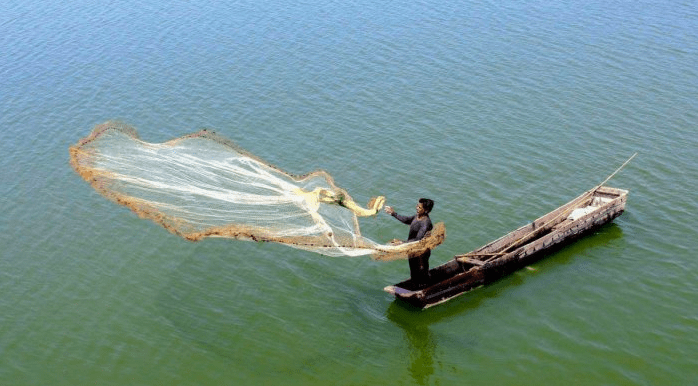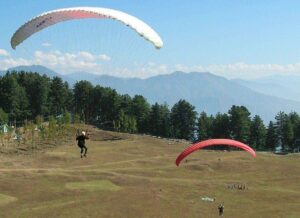Last Updated on March 4, 2021 at 6:35 pm
Around 14.5 million Indians find employment through fishing. India ranks second in aquaculture and third in fisheries production in the whole world. Around 1% of the total GDP of India comes from fishery. The National Fisheries Development Board states that the Fisheries Industry generates around Rs 334.41 billion in exports.

But this ages-old profession of fishing which is the means of survival for lakhs is dying slowly in India. Fishing, which used to be a full-time job sufficient to feed an entire family, has not remained the same. Lakes, which are a habitat of fishes, have shrunken over the years. Shrunken along with these water bodies are the number of fishes that would reside in them and earnings which fishermen would get through these fishes.
Anchar Lake in Srinagar which provides employment to many fishermen has shrunken significantly. In 1893-94, the lake would be around 12 square miles is now restricted to only 3 square miles. Anchar Lake is not the only lake that has shrunken. The International Journal of Fisheries and Aquatic Studies’ research states that Kashmir’s water bodies have been largely affected by extensive pollution, siltation (when water becomes choked with silt and clay), and encroaching development since 1990. All of these activities have slowly diminished fish biodiversity.
Nazeer Ahmad, a professor at Sher-e-Kashmir University of Agricultural Sciences & Technology of Kashmir (SKUAST) said that around 93,000 people in the region are still dependent on the fishing sector for their living. Nobody knows that for how long these fishermen will be able to survive with the profession. Many fishermen have adopted other form of employment when it became impossible to run their family’s expenditure through fishing.
Feroz Ahmad Bhat, an assistant professor and head of fisheries resource management at SKUAST, is of the opinion that agriculture has killed fishing. Pesticides which are used in agricultural activities somehow find their way into Kashmir’s lakes and prove hazardous for fishes. He said that around four decades ago, the periphery of Dal Lake in Srinagar was sandy and suitable for fish breeding. But now the shallows are no longer a good breeding ground because of pollution.
In 1997, the regional government constituted the Lakes and Waterways Development Authority (LAWDA) as a self-ruling organization to supervise and conserve the region’s water bodies. According to this organization, around 176,400,000 pounds of silt, 68,343 pounds of nitrates, and 8,818 pounds of phosphates are added to Dal Lake every year. The organization said that around $150 million have been spent since the 1980s to improve the lake’s condition. Still, the lake’s condition has shown no signs of improvement.



